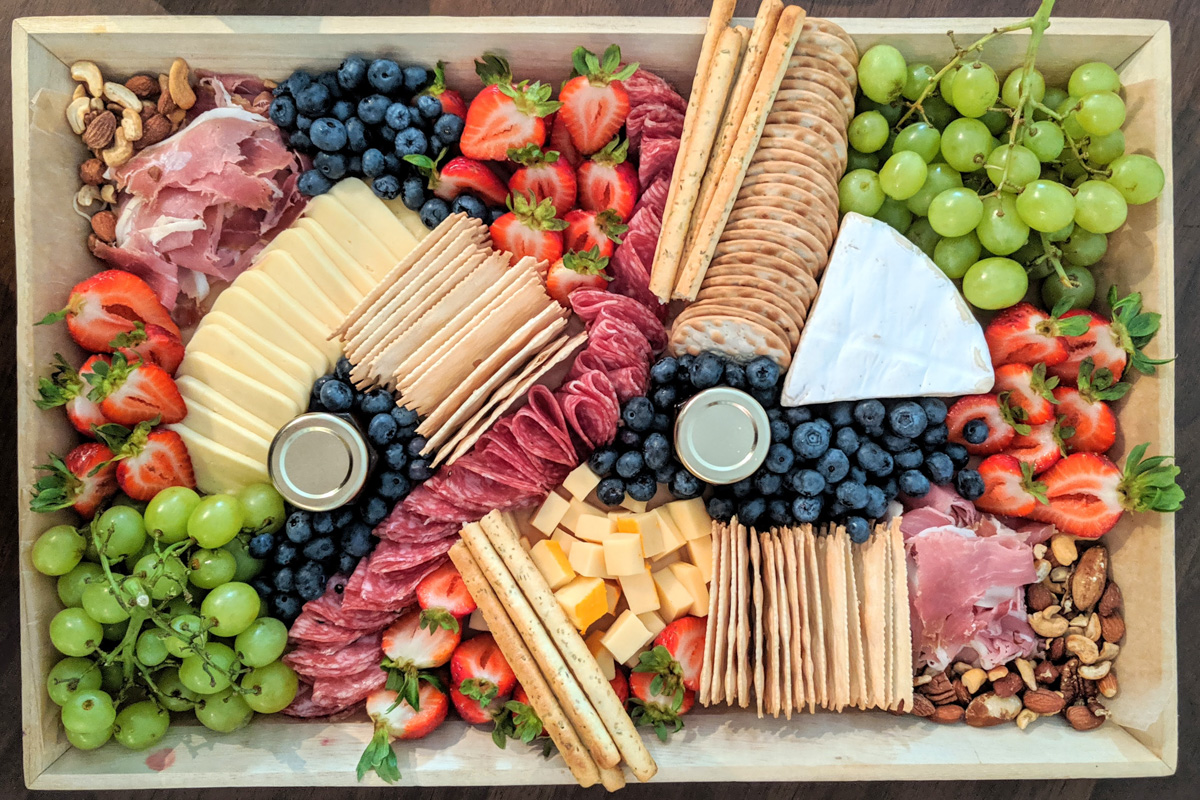I would hardly call myself a cheese and charcuterie expert, but I have learned to build quite a few of these tasty boards and platters over the years.
As a food and lifestyle writer, I’ve been lucky enough to attend many events (in pre-pandemic times) where beautiful, sprawling cheese and charcuterie spreads commanded attention. I’d absorb how they were assembled, what ingredients were used, and how I could replicate them at home.
Besides harnessing my love for all kinds of cheeses and cured meats, I also like building these meals-on-a-board because they are easy, versatile, and always delicious. Plus, my homemade grazing trays never fail to impress guests and even give some the (mistaken) impression that I’m a capable cook.
Here’s a short guide to building your own beautiful cheese and charcuterie boards to enjoy at home, especially this season where we’ll be spending more time indoors with our households.
The blank canvas
First, choose the foundation for your assembly: wooden or marble boards, platters, trays, or even a simple round plate can all serve as suitable vessels to display a variety of cheeses and cured meats. To keep your surface clean and oil-free, you might line it with waxed or parchment paper.
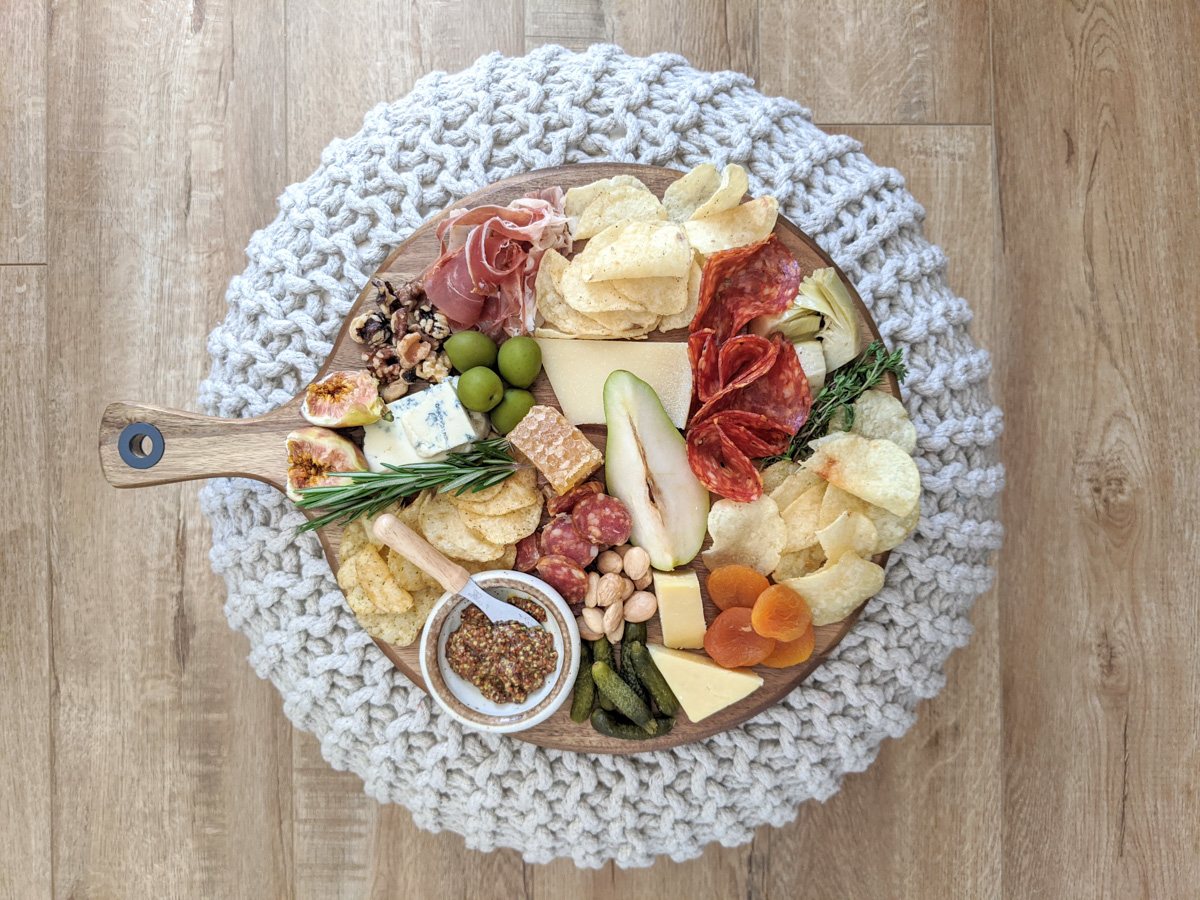
Photo by Tammy Kwan.
The cheeses
A well-rounded board will include a variety of cheeses with different degrees of firmness and flavour. I like to include a double- or triple-cream brie as a soft cheese, aged cheddar or mild Gouda for a semisoft cheese, and a small block of blue cheese for a stronger flavour.
Cutting the cheeses into different shapes and sizes (blocks, slices, or small cubes) helps add dimension. I recommend laying out the cheeses first to help you visualize where to arrange other ingredients. Specialty cheese shops such as Benton Brothers Fine Cheese on Granville Island and Bosa Foods in Vancouver have an excellent selection, but grocery stores such as Loblaws, IGA, and Fresh St. Market also stock assorted cheeses.
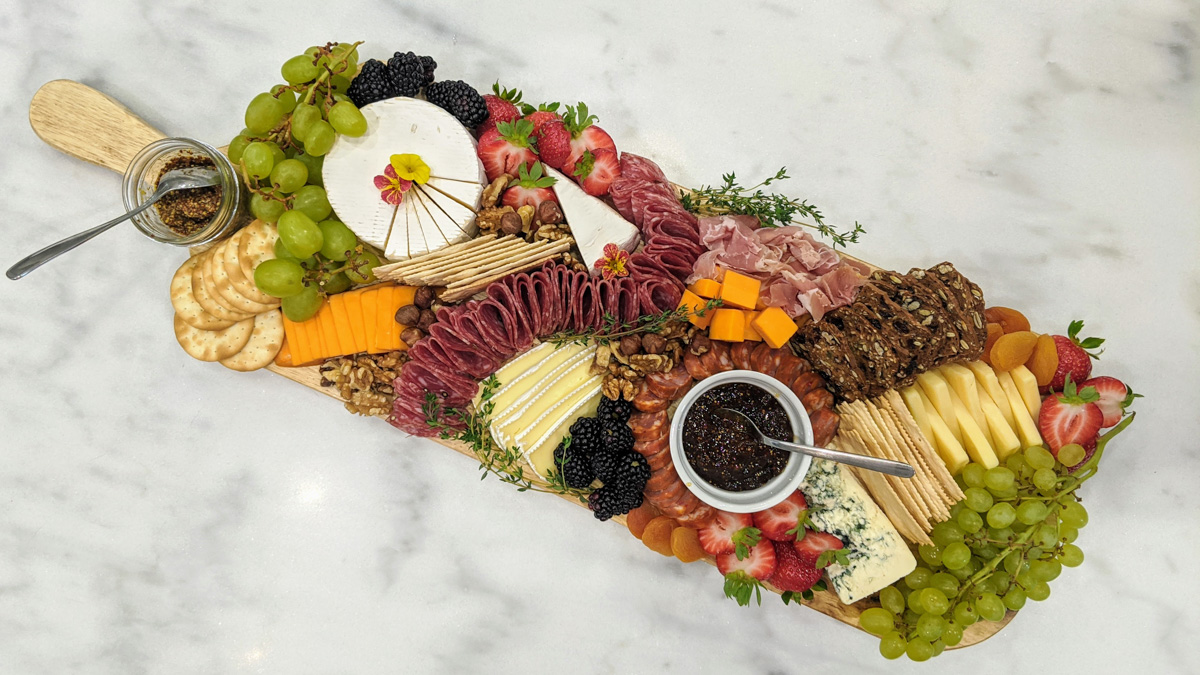
Photo by Tammy Kwan.
The charcuterie
As with the cheeses, adding different kinds of cured meats to your board adds variety, colour, and texture. My favourite charcuterie include thinly sliced prosciutto, spicy salami, and chorizo. A block of duck paté can also add a splash of bolder flavour.
One of the most aesthetically pleasing techniques for assembling salami is the Salami River method (via Marissa Mullen of That Cheese Plate). Simply fold each piece of salami in half, and then fold it over again. Stack these folded slices next to each other across a board, and it instantly elevates your creation. You can also substitute other kinds of meat, if you choose.
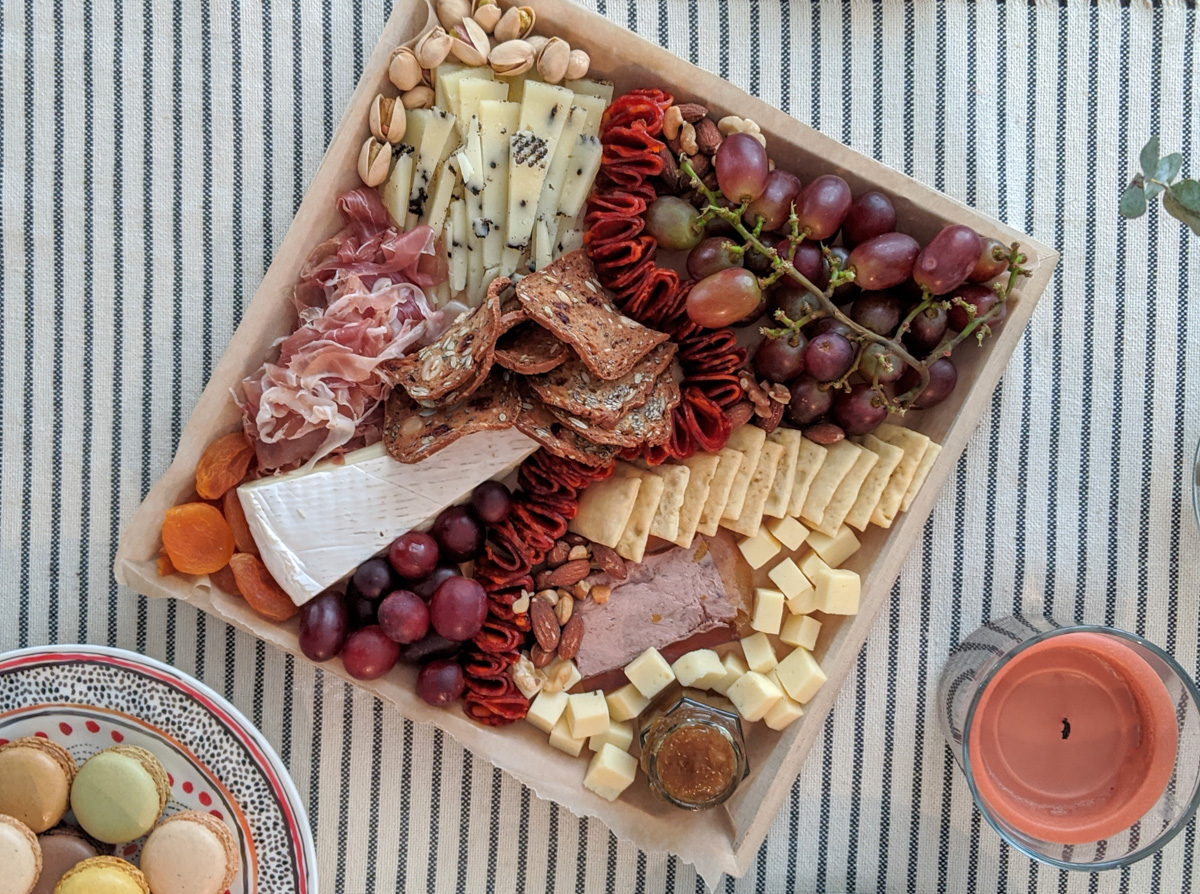
Photo by Tammy Kwan.
Your local grocery store likely stocks some selection of charcuterie. Oyama Sausage Co. on Granville Island, Cioffi’s in Burnaby, and Two Rivers Specialty Meats on the North Shore offer particularly high quality cured meats.
The fruit and crackers
My preferred picks for fruit pairings with cheese and charcuterie are berries and grapes—specifically strawberries, blackberries, and blueberries (when they are in season), as well as green grapes. These fruit bring a beautiful pop of colour, and their sweetness counteracts the acidity and saltiness in cheeses and meats. I also like to add at least two kinds of crackers to the board, such as nutty Raincoast crisps and plain water biscuits.
Be sure to wash your fruit thoroughly; I also pat them dry before assembling. Strawberries can be cut in half to showcase their soft interior hues, while grapes are best left as clusters on the stem for a fuller look.
The preserves and extras
Don’t forget preserves; their sweetness pairs perfectly with cheeses, especially stronger ones such as blue cheese. My go-to preserves are fig or apricot jams, and if you’re feeling fancy, add a small block of honeycomb. You can add dollops of your preserves directly to the board, or ladle them into mini jam jars or sauce dishes.
Dried apricots, nuts (I prefer pistachios or walnuts), olives, and fresh figs can help fill in the small holes and gaps in your board, and they give you something else to nibble before the last bite of cheese or meat.
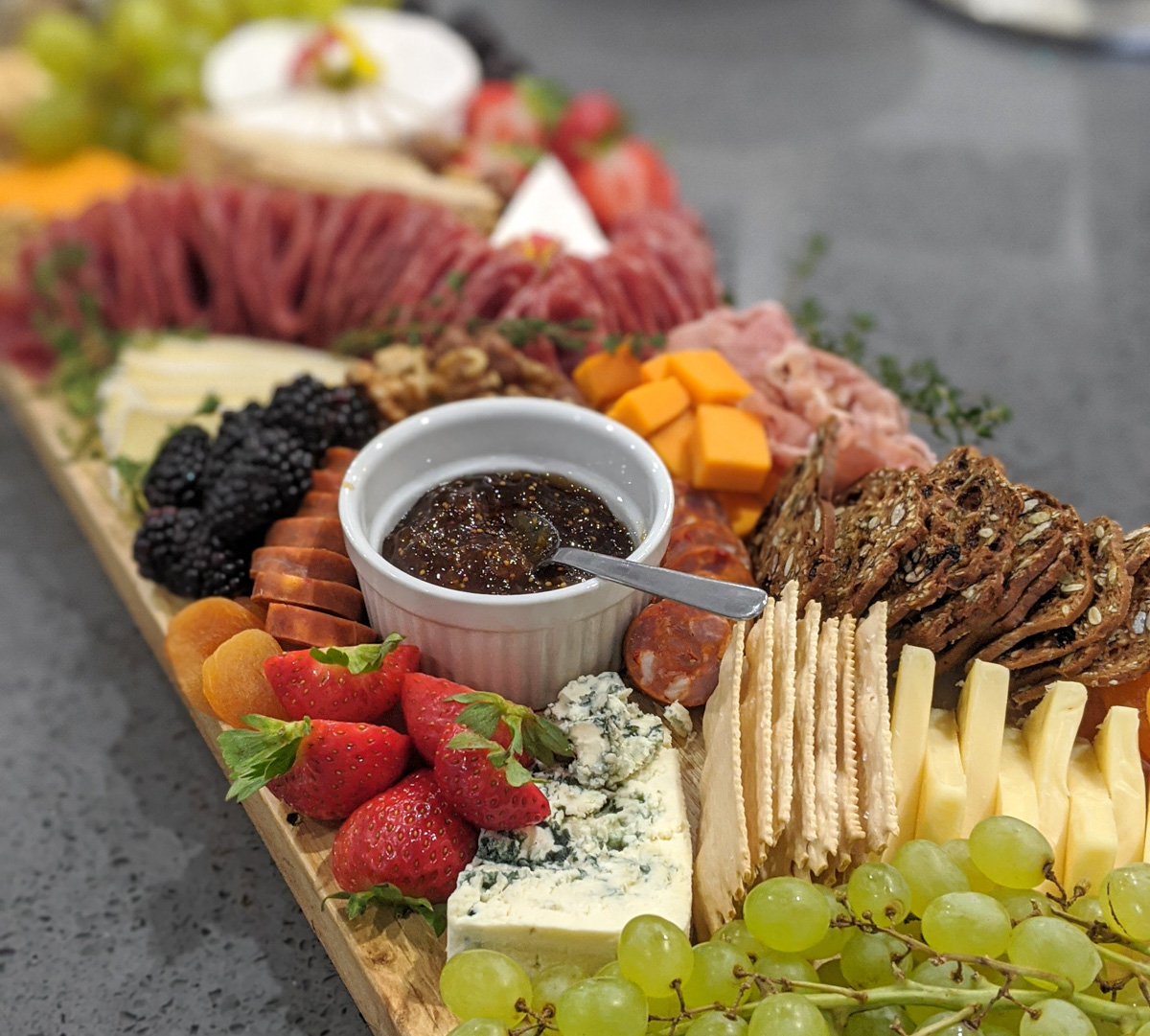
Photo by Tammy Kwan.
Lastly, garnishes: these aren’t essential for the cheese and meat board but can definitely raise the presentation a notch. Adding a few stems of rosemary, sage, or fresh edible flowers will beautify your board and make it photoworthy. Lay them on top of a block of cheese or tuck them between some fruits and crackers. Don’t be daunted by the task of assembling a cheese and charcuterie board. At the end of the day, it’s a form of art, and you can shape it however you please. The best part is, everything will still taste delicious.
Premade cheese and meat boxes
For those who prefer to have somebody else prepare their platters, Vancouver has many local companies that specialize in creating and curating fantastic cheese and charcuterie boxes, boards, platters, and grazing tables.

Image courtesy of Charcuterie Vancouver.
Mercuterie assembles gourmet ingredients in beautiful layouts and offers custom boxes, boards, tables, and even kid-friendly boards. Its individual grazing boxes have been particularly popular during the pandemic.

Image courtesy of Mercuterie.
The Graze Company has expanded outside of Vancouver and now offers its products in Calgary and the Okanagan too. Customers can find everything from DIY kits to graze boxes, boards, and tables with vegan, vegetarian, and dessert options. A holiday collection (DIY wreath kit) with bubbles will launch next week.
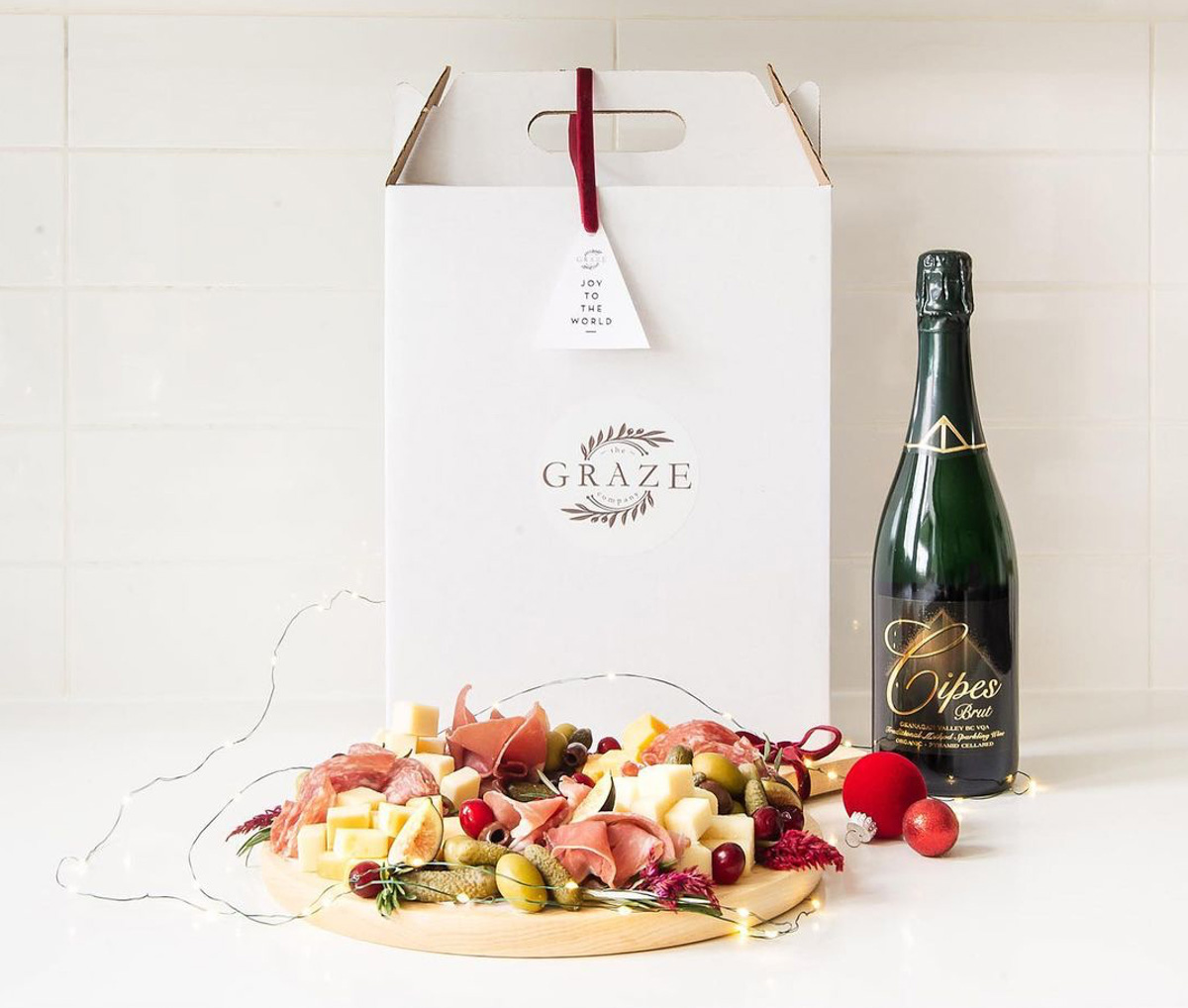
Image courtesy of Graze.
Charcuterie Vancouver serves Greater Vancouver and Kelowna, and is known for its custom graze tables, boards, and charcuterie boxes that are offered in sets, as well as vegan, gluten-free, and halal options. Despite the lack of events during the pandemic, its individual boxes appeal to many companies hosting corporate virtual events.
This story from our archives was first published on November 20, 2020. Read more tips and ideas for local Food and Drink.

